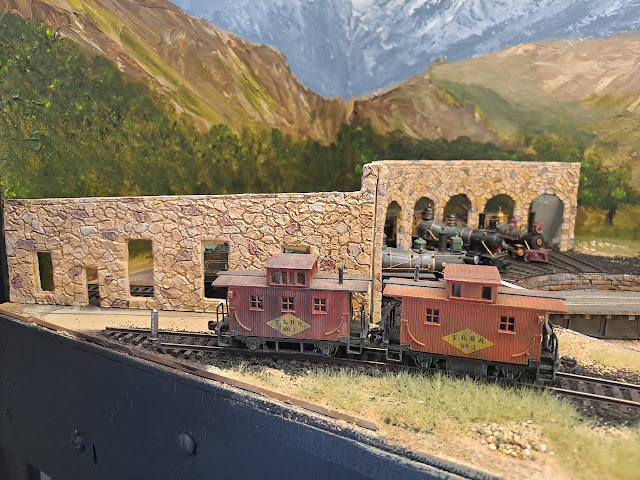I spent an afternoon reassembling the modules in my garage. I decided to screw the back of the modules to the wall. I started with the Roundhouse module. I set the track height to 125cm and then worked my way along the rest of the modules. By screwing them to the wall, I just had to put legs on the front. I braced each leg back to the wall as well so it's way more sturdy than the setup I had in Timaru.
I added bolts to the bottom of the legs so I could fine-tune the height for levelling the tracks where the modules meet. After a little troubleshooting, the trains started running smoothly, even if the track only goes to the end of the fourth module presently. I'm still working on the track plan for the remaining modules but hopefully, I can start building the module benchwork soon.



























